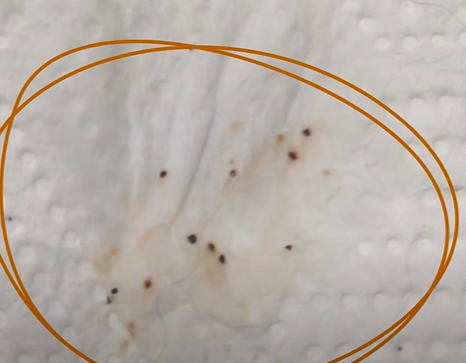What is Cat Litter?
Cat litter is a material used to absorb moisture and control odor in a cat’s litter box. It serves as an essential tool for maintaining hygiene and ensuring a clean environment for both cats and their owners. But not all cat litters are created equal. The right cat litter can make a significant difference in your cat’s health and your home’s cleanliness.

Importance of Choosing the Right Cat Litter
Choosing the right cat litter is crucial for several reasons. It affects your cat’s comfort, health, and the overall cleanliness of your home. The wrong choice can lead to problems like litter box avoidance, excessive tracking, and strong odors. Hence, understanding the various types of cat litter available can help you make an informed decision.
Types of Cat Litter
Clumping Cat Litter
Clumping cat litter is designed to form solid clumps when it comes into contact with moisture. This type of litter is highly popular due to its ease of cleaning.
Non-Clumping Cat Litter
Non-clumping cat litter absorbs moisture but doesn’t form clumps. It often needs to be changed more frequently than clumping varieties.
Silica Gel Cat Litter
Silica gel cat litter is made from silica dioxide sand and absorbs moisture efficiently, controlling odor without forming clumps.
Biodegradable Cat Litter
Biodegradable cat litter is made from natural materials like wood, corn, or paper. It’s an eco-friendly option that decomposes naturally over time.
Clumping Cat Litter
Benefits of Clumping Cat Litter
Clumping cat litter makes it easy to remove waste and control odor. The clumps can be scooped out, leaving the remaining litter clean and dry.
Drawbacks of Clumping Cat Litter
Some clumping litters can produce a lot of dust, which may cause respiratory issues for both cats and humans. They can also be more expensive than non-clumping varieties.
Best Brands of Clumping Cat Litter
Popular brands include Arm & Hammer, Fresh Step, and Dr. Elsey’s, known for their excellent odor control and clumping capabilities.
Non-Clumping Cat Litter
Benefits of Non-Clumping Cat Litter
Non-clumping cat litter often has a lower cost and can be more absorbent in the short term. It’s also less likely to stick to the cat’s paws.
Drawbacks of Non-Clumping Cat Litter
It requires more frequent changes to maintain cleanliness and can be less effective at controlling odor over time.
Best Brands of Non-Clumping Cat Litter
Brands like Tidy Cats and Feline Pine are well-regarded for their non-clumping options.
Silica Gel Cat Litter
Benefits of Silica Gel Cat Litter
Silica gel cat litter is highly absorbent and controls odors effectively. It also produces less dust compared to other types of litter.
Drawbacks of Silica Gel Cat Litter
It can be more expensive than other types and some cats might not like the texture.
Best Brands of Silica Gel Cat Litter
Brands such as Fresh Step Crystals and PetSafe ScoopFree offer top-quality silica gel litters.
Biodegradable Cat Litter
Benefits of Biodegradable Cat Litter
Biodegradable cat litter is eco-friendly and made from renewable resources. It’s often free from chemicals and additives.
Drawbacks of Biodegradable Cat Litter
It can be more expensive and may not control odor as effectively as other types.
Best Brands of Biodegradable Cat Litter
World’s Best Cat Litter and ökocat are leading brands in the biodegradable litter market.
Factors to Consider When Choosing Cat Litter
Cat’s Preference
Cats can be particular about their litter. It’s essential to choose one that your cat is comfortable using.
Odor Control
Effective odor control is crucial for maintaining a fresh-smelling home. Look for litters with strong odor-neutralizing properties.
Dust Levels
High levels of dust can cause respiratory issues. Opt for low-dust or dust-free varieties to protect your cat’s health.
Environmental Impact
Consider the environmental footprint of the litter. Biodegradable options are better for the planet.
How to Transition Your Cat to a New Litter
Step-by-Step Guide
- Introduce the new litter gradually by mixing it with the old litter.
- Increase the proportion of new litter over time.
- Monitor your cat’s reaction and adjust as needed.
Tips for a Smooth Transition
- Be patient and give your cat time to adjust.
- Keep the litter box clean to encourage use.
- Offer positive reinforcement when your cat uses the new litter.
Maintaining Your Cat’s Litter Box
Daily Cleaning Routine
Scoop out waste at least once a day to keep the litter box clean and odor-free.
Weekly Deep Cleaning
Empty the litter box completely, wash it with soap and water, and refill it with fresh litter.
Tips for Odor Control
- Use baking soda or specialized litter deodorizers.
- Ensure proper ventilation in the area where the litter box is placed.
Common Problems with Cat Litter and Solutions
Litter Tracking
Place a mat outside the litter box to catch litter from your cat’s paws. Choose low-tracking litter options.
Litter Box Aversion
Ensure the litter box is in a quiet, accessible location. Keep it clean and try different types of litter if your cat shows aversion.
Excessive Odor
Clean the litter box regularly and consider using odor-control litters or deodorizers.
Health Concerns Related to Cat Litter
Respiratory Issues
Dust from cat litter can cause respiratory problems. Use low-dust or dust-free litter to mitigate this risk.
Allergies
Some cats and humans can be allergic to certain types of litter. If you notice allergy symptoms, try switching to a hypoallergenic variety.
Toxins
Avoid litters with harmful chemicals or fragrances that could be toxic to your cat.
DIY Cat Litter Solutions
Homemade Cat Litter Recipes
You can make cat litter from materials like shredded paper, sand, or wood shavings. These options are often more affordable and eco-friendly.
Pros and Cons of DIY Cat Litter
While cost-effective, DIY litters might not offer the same odor control or absorbency as commercial products.
Eco-Friendly Cat Litter Options
Sustainable Brands
Brands like Yesterday’s News and